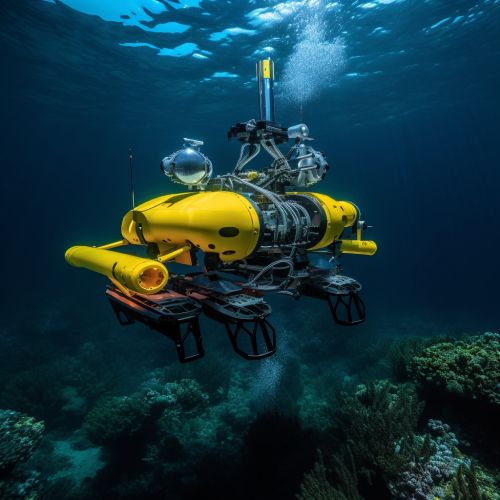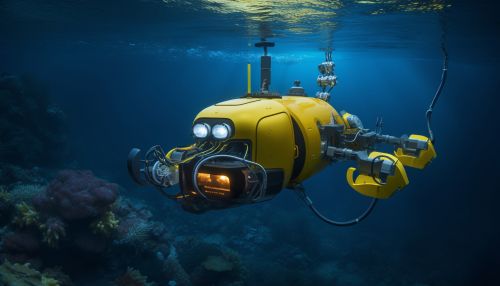Marine Technology
Introduction
Marine technology refers to the devices, tools, and machinery that are used in the study and understanding of the marine environment, as well as in the exploration and exploitation of marine resources. This field of study encompasses a wide range of technologies, from simple tools used by early seafarers to the complex machinery and equipment used in modern marine research and industry. Marine technology is a multidisciplinary field that combines aspects of oceanography, engineering, biology, and information technology.
History of Marine Technology
The history of marine technology dates back to the earliest days of human civilization, when people first began to explore and exploit the resources of the sea. Early seafarers used simple tools such as canoes, rafts, and oars to navigate the waters, while they used nets and spears for fishing. Over time, these tools evolved into more complex devices, such as the compass, the sextant, and the chronometer, which allowed for more accurate navigation and exploration.
In the 19th and 20th centuries, advances in technology led to the development of steamships, submarines, and other types of marine vessels. These innovations, along with improvements in communication and navigation technologies, opened up new possibilities for marine exploration and exploitation. Today, marine technology encompasses a wide range of devices and systems, from underwater robots and sonar equipment to satellite-based navigation systems and advanced marine engines.


Marine navigation and communication technologies are crucial components of marine technology. These technologies enable ships and other marine vessels to navigate the seas safely and efficiently, while also allowing for communication between vessels and with shore-based stations.
Marine navigation technologies include GPS systems, radar, and sonar, among others. GPS systems use signals from satellites to determine a vessel's exact location, while radar and sonar systems use radio waves and sound waves, respectively, to detect and locate objects in the water.
Marine communication technologies, on the other hand, include satellite communication systems, radio communication systems, and internet-based communication systems. These technologies enable vessels to communicate with each other and with shore-based stations, providing crucial information about weather conditions, navigational hazards, and other important factors.
Marine Engineering Technologies
Marine engineering technologies encompass a wide range of tools and systems used in the design, construction, and maintenance of marine vessels and structures. These technologies include computer-aided design (CAD) software, materials science technologies, and various types of machinery and equipment.
CAD software is used in the design of ships and other marine structures, allowing engineers to create detailed 3D models of their designs and to simulate their performance under various conditions. Materials science technologies, on the other hand, are used in the selection and testing of materials for the construction of marine structures, ensuring their durability and resistance to the harsh marine environment.
Machinery and equipment used in marine engineering include everything from simple hand tools to complex machinery such as cranes, welding machines, and hydraulic systems. These tools and machines are used in the construction and maintenance of ships, offshore platforms, and other marine structures.
Marine Environmental Technologies
Marine environmental technologies are used in the study and monitoring of the marine environment, as well as in the mitigation of environmental impacts caused by human activities in the marine environment. These technologies include various types of sensors and monitoring devices, as well as technologies for the treatment and disposal of waste generated by marine activities.
Sensors and monitoring devices used in marine environmental technologies include temperature sensors, salinity sensors, pH sensors, and various types of biological and chemical sensors. These devices are used to monitor various aspects of the marine environment, such as water temperature, salinity, pH levels, and the presence of various biological and chemical substances.
Waste treatment and disposal technologies used in the marine environment include various types of waste treatment systems, as well as technologies for the safe disposal of waste. These technologies are crucial for minimizing the environmental impacts of human activities in the marine environment, such as fishing, shipping, and offshore oil and gas extraction.
Future of Marine Technology
The future of marine technology is likely to be shaped by a number of trends and developments. One of these is the increasing use of autonomous and remotely operated vehicles in marine research and industry. These vehicles, which include underwater robots and drones, are capable of performing a wide range of tasks, from mapping the seafloor to inspecting underwater structures and collecting biological and chemical samples.
Another trend is the increasing use of digital technologies in marine activities. These technologies, which include digital mapping and modeling tools, data analytics, and artificial intelligence, are being used to improve the efficiency and effectiveness of marine research and industry.
Finally, there is a growing focus on sustainability in marine technology. This is reflected in the development of technologies for renewable marine energy, such as wave and tidal energy, as well as technologies for the mitigation of environmental impacts caused by human activities in the marine environment.
